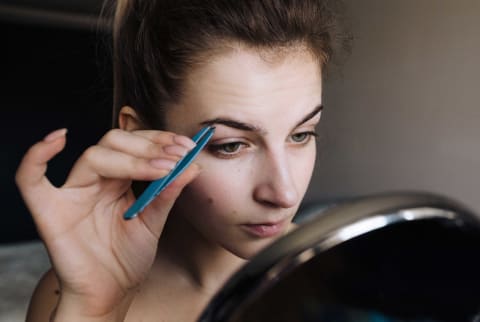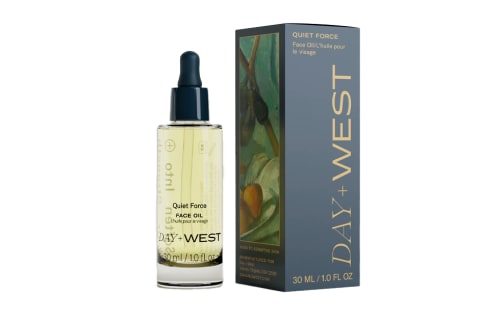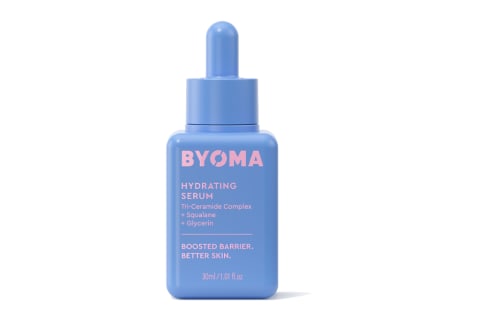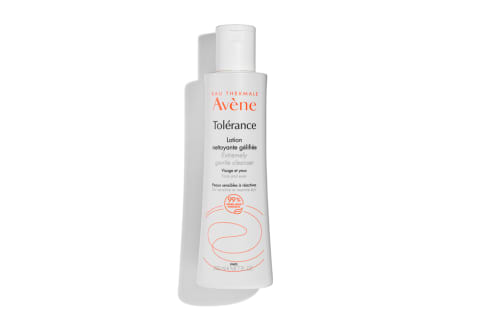Advertisement
Facial Hair Removal: 7 Options & Who They're Best For, From Derms


Everyone has some hair on their face, be it peach fuzz or a full beard. Nobody is born totally hairless, so remember that your critical eye is likely conditioned more so by societal beauty standards than anything else.
But no matter why you do it, hair removal on the face can be intimidating. The hardest part is deciding which method to use, so we asked dermatologists for their expert opinion on the most popular options.
Quick list: Facial hair removal methods:
- Shaving / dermaplaning
- Waxing
- Tweezing
- Sugaring
- Laser hair removal
- Threading
- Hair removal cream (depilatory hair creams)
Shaving or dermaplaning
For minor facial hair (a strand here and there or peach fuzz) a dermaplaning razor will do the trick. The dermaplaing tool looks like a small scalpel and actually takes a layer of dead skin off the top, along with unwanted hairs.
This kind of razor won't really work for anyone with thick, full beards or mustaches, so only try it if your facial hair is thin and sparse. Otherwise, shave with a larger razor designed for full facial hair.
Dermaplaning is also a good option for those who prefer a painless removal process. If you have active breakouts, eczema, psoriasis, or another inflammatory skin condition, you should avoid it entirely or speak with your dermatologists before trying it out as it may irritate your skin further.
Some people dermaplane for hair removal alone, and others add the step as a form of exfoliation. However, this isn't a project to mess around with. Below, an expert-recommended routine to follow:
- Double cleanse: "Double-cleansing the skin before ensures that you are removing any makeup or daily buildup on the skin," says licensed esthetician at Schweiger Dermatology Group Joelle O'Connor, L.E. Do this by first using an oil cleanser on dry skin, rinsing clean, and following up with a gentle water-based cleanser like the Avene Tolerance Extremely Gentle Cleanser Lotion.
- Apply oil: Before going in with your razor, apply a face oil. "Shaving on dry skin is only asking for nicks, cuts, and irritation," O'Connor notes. "Ensure that it is a noncomedogenic facial oil—meaning that it will not clog the pores," O'Connor says. Opt for one like the Day+West Quiet Force formula that combines jojoba oil, sweet almond oil, sunflower seed oil, and grapeseed oil for all of the hydration without the pore-cloggers.
- Shave carefully: Now it's time to go in with your razor. "Pull the skin so that it is taut, and shave in the direction of hair growth," explains board-certified dermatologist Brendan Camp, M.D., FAAD. You want your tool to be sharp so it doesn't cause irritation. One A+ option is the Tweezerman Facial Razor.
- Avoid broken skin: Be careful not to disrupt already fragile skin. "Do not go over any skin that is broken out or irritated," notes doctor of nursing practice in dermatology Jodi LoGerfo, DNP, APRN, FNP-C. This means any active pimples, irritated skin, minor cuts, sunburns, peeling skin, eczema patches, etc.
- Always moisturize after: Once you've shaved your unwanted hairs and removed the fallen strands with a splash of water, it's important to hydrate your skin. Use a formula rich in hyaluronic acid like the Byoma Hydrating Serum, followed by a moisturizer. On the evenings you choose to dermaplane, skip exfoliants and retinol as your skin is more susceptible to irritation.
Waxing
If holding a razor to your face is a bit too much, waxing is another safe option. Logerfo notes that this method lasts anywhere from two to six weeks—a much longer time than the rebound of shaving.
However, waxing isn't fit for everyone. If you have an active skin condition such as acne or eczema or you're on medication that impacts your skin sensitivity, you should consult your dermatologist before waxing.
Those who use retinol in any form including over-the-counter and prescription-grade products like tretinoin should be extra cautious when it comes to waxing, as the retinoids sensitize your skin and may cause an increased risk of reaction.
If none of those apply to you and you crave a long-lasting removal, then wax away. Below, expert tips:
- Make sure your hair is long enough: "Before waxing, you need to make sure that the hair is at least ¼ of an inch in order for the hairs to be removed," says board-certified dermatologist Marisa Garshick, M.D., FAAD.
- Apply a powder: "Next, take a cotton ball with a little bit of talc-free powder and apply lightly to the area you are waxing," O'Connor says. She recommends the Gigi Pre-Epilation Dusting Powder. This step ensures any moisture or oil is soaked up. "If the skin is still wet or has any excess oil, the wax will not be able to grip the hair you are trying to remove," she adds.
- Use strips to start: If you're new to waxing, use a strip instead of hard wax. "Peel apart the wax strip and apply it in the direction of the hair growth (you may need to get a magnification mirror to really see the growth direction)," O'Connor says.
- Remember to leave a holding tab: "Press down on the strip ensuring that it has gripped the hair, but leave a little piece of the strip unattached to the hair for you to grip," she continues.
- Pull in the opposite direction: Finally, it's time to remove the strip. Remember that the quicker you go, the less painful it will be. "Hold skin taut and quickly pull the strip off in the opposite direction of hair growth," O'Connor explains.
- Don't wax twice: To be clear, you should never wax the same area twice in a row. O'Connor notes double-waxing can lead to burns and irritation, so just use tweezers if you missed a hair or two.
Tweezing
If you only have a few hairs that bother you, then tweezing might be the best option. This is a simple, effective, and inexpensive way to remove unwanted hair without the fuss.
You should follow the same hygiene protocols that come with general hair removal, including washing your face beforehand and moisturizing afterward.
In addition, wash your tweezers frequently to avoid touching bacteria to the skin again and again.
Sugaring
Think of sugaring like waxing but for sensitive skin. Sugaring paste is made from 100% natural ingredients—sugar, lemon, and water. The goop is able to penetrate the hair follicle and adhere to individual hairs before removing them at the root.
Because it pulls the hair in the same direction it grows, it can be less abrasive on the skin and prevent hair breakage (a precursor for ingrown hairs).
"Removing hair in the same direction of growth significantly reduces the tension put on the hair, making it less likely to break during the removal process," Amanda Mulea, licensed esthetician at SUGARED + BRONZED previously told mbg.
However, this method may leave behind some hairs, especially if you have coarse or thick hair.
If you want to try sugaring at home, keep the following tips in mind:
- Pull with hair growth: With a flicking motion, pull the sugar paste forward in the direction of hair growth. Just make sure you're not pulling upward—according to Vela, flicking upward can cause the paste to get stuck, lift the skin, and can potentially lead to bruising.
- Hydrate after: We've said it before and we'll say it again: Don't wrap up your sugaring endeavor without hydrating your skin post-removal.
- Patch-test: Some people are sensitive to lemon juice or apple cider vinegar (two ingredients often used in a sugaring blend) so patch-test your goop before using it on your face.
For a step-by-step routine and DIY sugaring recipe, check out this guide.
Laser hair removal
If you're super prone to ingrown hairs, laser hair removal may be a smart option. That being said, it's not actually going to last forever.
"While laser hair removal can be long-lasting, it's important to note that it may not offer permanent removal but rather reduction, and maintenance may be needed," Garshick says.
You should also know that this removal method isn't effective for light peach fuzz, gray hair, or white hair. "It works best on pigmented hairs because the pigment serves as the target of the laser," Camp explains.
Another important note is that some skin types and skin tones will benefit more from some lasers than others. "While laser hair removal can be performed on all skin types, including those with the darker skin, it is especially important to see a board-certified dermatologist to ensure the correct laser is being used for your skin," Garshick says.
You can do at-home laser removal. These devices tend to be often less effective and will take longer to see results. If you do want to take this route, be sure to consult your derm before investing in a device.
Threading
Next up, we have threading. "Threading uses a thin cotton or polyester thread that is doubled, then twisted. It is then rolled over areas of unwanted hair, plucking the hair out of the follicle," O'Connor explains.
She adds, "Unlike tweezing, where you are plucking individual hairs one at a time, threading can remove rows of hair at one pass." Some people report more pain with threading than tweezing; others less—it all depends on your unique tolerance.
"Threading removes hairs from the follicle, similar to waxing," Camp notes. "Unlike waxing however, little to no damage is done to the epidermis as the thread grips the hair and lifts it directly from the follicle," he says—which is why it's recommended for sensitive skin over methods like waxing.
This is a great option for those prone to ingrowns from shaving or anyone who wants longer-lasting results. However, it can be difficult to do at home and takes much more practice than DIY waxing, sugaring, or dermaplaning.
Hair removal cream
There are some hair removal creams (also called depilatory hair creams) formulated for the face, but they often cause irritation and should be used only by folks who need to use them for any reason—and as a last resort at that.
Plus, this method does not remove the hair at the follicle (like waxing, threading, laser, etc.) so it won't last as long.
"I don't necessarily recommend chemical depilatories, but if someone would like to use it, I usually recommend doing a test site first to be sure they can tolerate it," Logerfo notes.
Apply a bit of the cream to the inside of your arm and then test it again on a small area of your face to be sure you won't have a bad reaction. If you notice any redness, itching, burning, or bumps, stop using it and opt for a different hair removal method.
Facial hair causes
Everyone has facial hair of some sort, and it's nothing to worry about. That being said, increased facial hair growth can be a sign of something else happening inside the body, so it's helpful to know the triggers. Below, a few to note:
- Age & hormones: "With aging and also as a result of hormonal changes, some people may experience hair thinning in certain areas and hair growth in others," Garshick notes. She adds, "In some cases, people may notice the hair around the chin and lip becomes more coarse as we age." So if you have stronger hairs around your lips or chin as you age, just know it's not abnormal.
- PCOS: "PCOS (polycystic ovarian syndrome) is a hormonal imbalance where the balance between female and male hormones (androgen and testosterone) is shifted to producing more male hormones, which causes the body to produce darker hair around the face," O'Connor explains. Camp notes other symptoms including acne, scalp hair loss, and irregular menstrual cycles. If you think you may have PCOS, visit your doctor and voice your concern.
- Medication: All of our experts note that some medications can cause increased facial hair growth. Talk with your doctor if you think your medication may be influencing this.
Shop products mentioned
FAQ
Can you remove female facial hair?
Yes, you can remove female facial hair. Below, a few options:
• Shaving / dermaplaning
• Waxing
• Tweezing
• Sugaring
• Laser hair removal
• Threading
• Hair removal cream (depilatory hair creams)
Is it a good idea to remove facial hair?
If the hair on your face bothers you, then it may be helpful to gently remove it. The common myth that your hair will grow back darker is just that—a myth! However, you should be gentle when removing facial hair as the area is more sensitive than other parts of the body like the arms and legs.
How can I remove facial hair permanently from my face?
Unfortunately, there is no way to permanently remove hair from your face. The longest-lasting option will be laser hair removal, but you should visit a dermatologist to discuss which kind of laser is best suited for your unique skin type and condition before trying to do it at home.
The takeaway
If you want to remove unwanted facial hair, just know you have plenty of options. Whether you choose to shave, wax, tweeze, or thread your unwanted strands, be sure to tend to the skin before and after to prevent irritation. Dermaplaning is certainly one of your options, but read this guide before you commit to the practice so you can do so with confidence (your skin will thank you).



